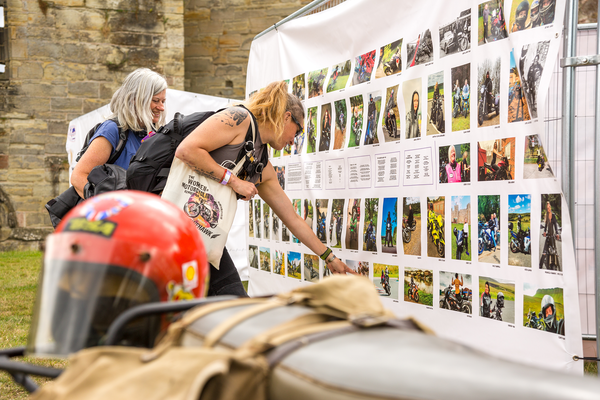How the BMW GS saved the company and changed the motorcycle world forever
The reveal of BMW’s all-new R 1300 GS is a landmark moment not only for BMW – but for motorcycling in general
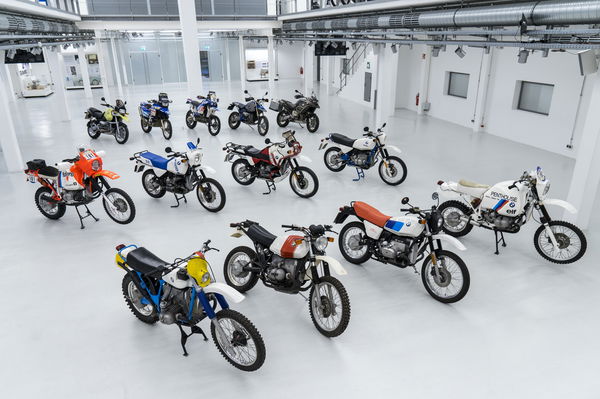
With the unveiling of the all-new BMW R 1300 GS there’s never been a better time to ask, ‘Where did it all come from?’ And revisit all of the iconic models…
After all, the German giant’s big boxer twin has long been not only the definitive adventure bike for over two decades with the new version looking set to retain that mantle for years to come but it’s also been BMW’s – and Britain’s – best-selling bike for as long as anyone can remember.
Indeed, the GS, in all its forms – and with the 1300, it’s currently up to its thirteenth generation, depending on who’s counting – has been such a sales success (BMW marked the production of its millionth GS in the summer) the bike has been credited not only with effectively creating the current dominant motorcycling category, adventure bikes, but with forming the financial foundations for modern BMW Motorrad and even saving the company from closure back in the 1980s.
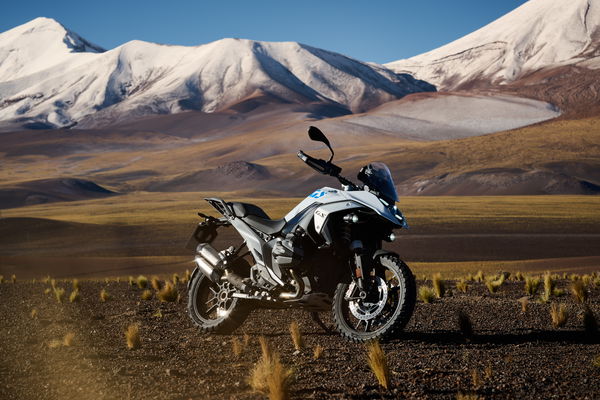
Not bad for a bike which, originally, was created somewhat out of desperation as a ‘parts bin special’ and inspired by the sporting whims of a small group of BMW engineers.
Back in the late 1970s, BMW Motorrad was in big trouble. Facing an onslaught of cheaper, faster superbikes from Japan, BMW’s traditional range of boxer twin-powered tourers was viewed as expensive and out of date. As a result, BMW sales, particularly in the important US market, were plummeting so much so that the whole future of BMW Motorrad was in doubt. A radical solution, the all-new liquid-cooled K-series, was in the works, but still years away. Instead, BMW needed a sure-fire sales hit – and fast.
At the same time the popularity of ‘big enduros’ was on the rise. In the US, bikes like Yamaha’s single-cylinder XT500 had proved a big hit while in Europe large-capacity enduro racing was on the rise, occasionally with ‘home-brewed’ BMWs. As early as 1970 Herbert Schek won the German enduro championship aboard a bike based on a BMW boxer. In 1975, BMW engineer Rudiger Gutsche built a similar machine to great success.

In 1977, when it was announced that there would be a new 750cc+ category in German enduro racing, these two undercurrents began to hint at a future BMW production bike. First, BMW technical director Hans-Gunter von der Marwitz asked Laverda, with whom he’d good relations, to create a prototype enduro racer based around an R60 boxer engine.
Meanwhile, another dirt-racing BMW employee, head of testing Laszlo Peres, built his own ‘home-brewed’ boxer enduro, which he rode to second in the German championship the following year.
These concepts were to lead directly to the creation of the first GS, the 1980 R80G/S. Next, spurred on by his success, Peres saw an opportunity to build a production version and, with some fellow BMW engineers, built the first forerunner of the GS – a prototype dubbed the ‘Red Devil’.
Then, in early 1979, a senior management change arrived at just the right time. Karl-Heinz Gerlinger was tasked with either saving the whole BMW Motorrad division – or closing it. In a bid to achieve the former he backed Peres’ prototype.
Years later, he recalled the mood at the time: “You have to take yourself back to the situation at the time. The competition from the Far East was overwhelming. The Japanese manufacturers were the dominant force in world markets… The development of our K-series had only just begun. However, we needed a product pretty quickly that would enable us to win back customers.
“That’s why, thankfully, we made a move when the developers presented the off-road prototype to us. We saw the bike’s potential and thanks to the use of tried and tested components a rapid series launch was a realistic prospect.”

The R80G/S, launched in September 1980, was the result and an immediate hit, selling double what was expected of it and went on to be an even greater success when it also won the first time out at the 1981 Paris-Dakar Rally.
But, of course, that was just the start of what would grow into an entire motorcycling dynasty.
Further Dakar wins came in 1983, 1984 and 1985 (the 1984 result prompted the production of the first R80G/S ‘Paris Dakar’ replica). And by 1987, when the second generation R80 and R100 GSs were launched (along with a raft of modifications including a new Paralever rear end, extra 1000cc model and name change to ‘GS’, standing for ‘Gelande Sport’) the GS was not only established, but it was also beginning to spawn a whole new generation of twin-cylinder, ‘Dakar replica’ machines including Honda’s Africa Twin, Yamaha’s Super Tenere and Cagiva’s Elefant.
In the 1990s the GS got bigger and better still. In 1993 it evolved into the oil-cooled R 1100 GS which was described by Cycle World magazine as the “best all-round motorcycle in the world”. Then in 1999, it became the even bigger and better-selling R 1150 GS.
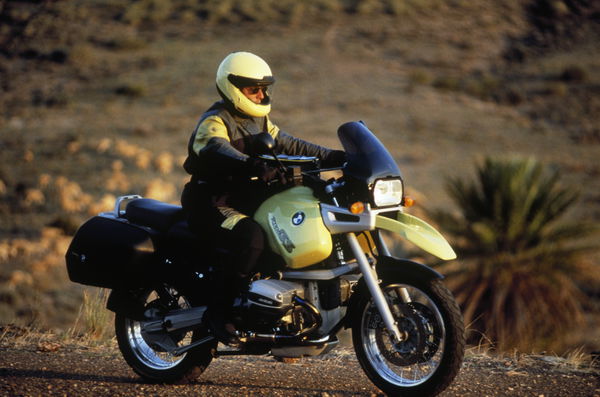
But the biggest changes and sales were still to come. In 2001 BMW launched its first big-tanked, off-road orientated ‘Adventure’ variant, effectively a spiritual successor to the earlier ‘Dakar Replica’ versions now rendered obsolete by a change in the race’s rules.
That bike achieved global fame via Ewan MacGregor and Charley Boorman’s televised ‘Long Way Round’ in 2004 and the associated publicity and growing popularity of adventure bikes thereafter cemented the GS’s success.
From 2004’s first R 1200 GS, it’s been BMW’s best-selling bike, Britain’s since the updated 2009 version and has remained on top ever since through 2013’s new liquid-cooled version and 2020’s enlarged, 1250 ‘ShiftCam’.
On the evidence of the new R 1300 GS so far, we see no reason why that success won’t continue for a good few years to come…
BMW GS history - generation by generation
1981-1986 R80 G/S

Original as inspired by enduro prototypes used an R80 engine, a frame from the R65 and forks from the R100. The Paralever, tank, plastic side panels and tyres, however, were all-new.
798cc (84.8 x 70.6mm)
50bhp @ 6500rpm (42lb ft @ 5000rpm)
167kg dry
Price when new: £2,449
Number built: 21,864.
1987-1990 R80 GS/R100 GS
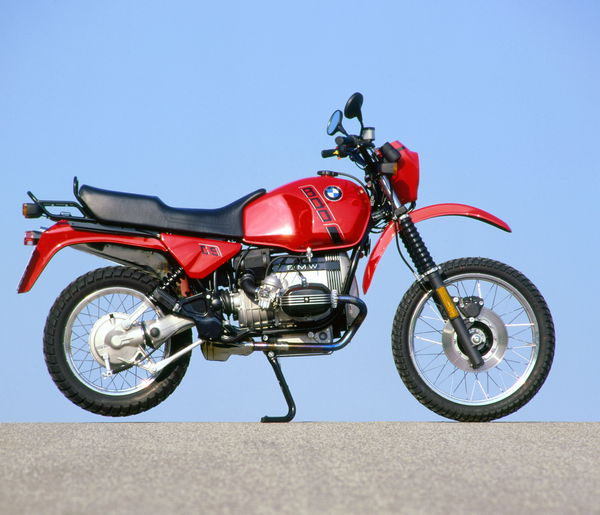
Spun into two models and debuting Paralever rear suspension, cross-spoke wire wheels, uprated brakes, a bigger tank and a flyscreen (on the 100). Plus, a revised name.
798/980cc (84.8 x 70.6mm/94 x 70.6mm)
50bhp @ 6500rpm (45lb ft @ 3750rpm)/60bhp @ 6500rpm (56lb ft @ 3750rpm
210kg wet/210kg wet
Price when new £4249/£4679
Number built: N/A
1991-1993 R80 GS/R100 GS
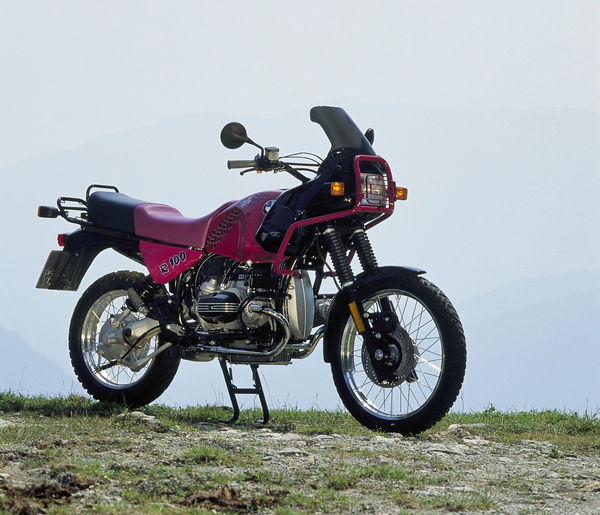
New frame-mounted fairing, improved front brake, new switchgear from the K-series, new shock, clocks, filler cap, silencer, seat, and high or low front mudguard.
798/980cc (84.8 x 70.6mm/94 x 70.6mm)
50bhp @ 6500rpm (45lb ft @ 3750rpm)/60bhp @ 6500rpm (56lb ft @ 3750rpm
215kg wet/220kg wet
Price when new £5,450/£6,125
Number built: N/A
1993-1999 R1100 GS
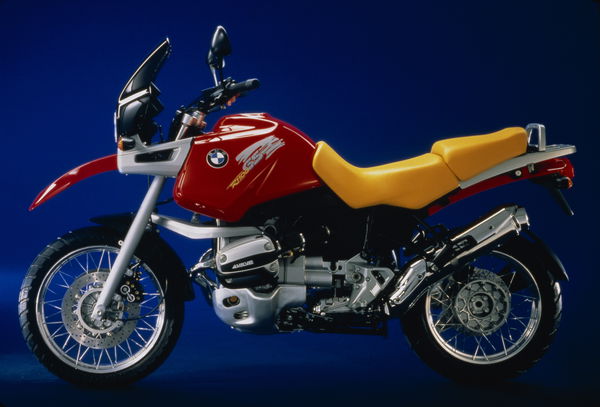
All-new model with oil-cooled engine. All-new chassis with Telelever front and Paralever rear. New styling with first ‘beak’.
1085cc (99 x 70.5mm)
80bhp @ 6750rpm (71lb ft @ 5250rpm)
240kg wet
Price when new: £8,295
Number built: 39,842
1999-2004 R1150GS

Enlarged engine, six-speed (from five) gearbox, shorter Paralever, new exhaust, new front fairing with asymmetric lights, enlarged oil cooler.
1130cc (101 x 70.5mm)
85bhp @ 6750rpm (72lb ft @ 5250rpm)
249kg wet
Price when new: £8,000
Number built: 58,023
2001-2005 R1150 GSA
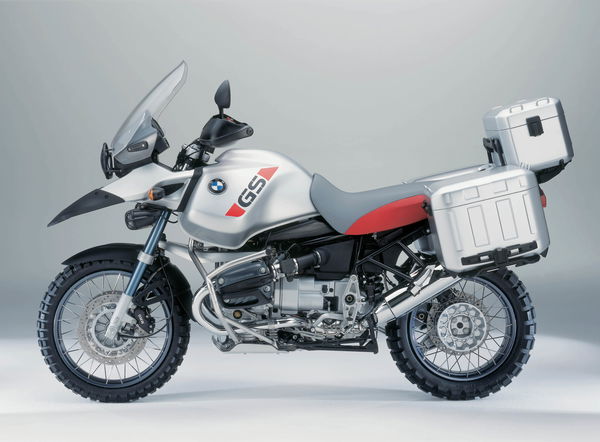
New ‘Adventure’ variant with larger 30-litre tank, taller/wider screen, 20mm longer suspension, extra protection, different seat and paint.
1130cc (101 x 70.5mm)
85bhp @ 6750rpm (72lb ft @ 5250rpm)
253kg wet
Price when new: £8,500
Number built: 17,828
2004-2007 R1200GS
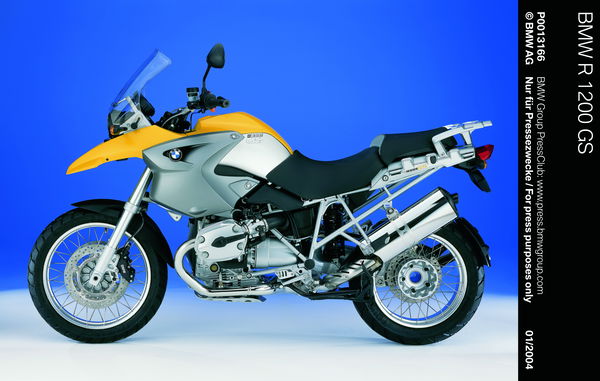
Uprated, enlarged engine, reduced weight, new suspension, new digital instruments, CAN bus wiring, new styling. Adventure version follows in 2005.
1170cc (101 x 73mm)
98bhp @ 7000rpm (85lb ft @ 5500rpm)
225kg wet
Price when new: £9,235
Number built: 100,000 approx (inc. 15,627 Adventure variants)
2007-2010 R1200GS
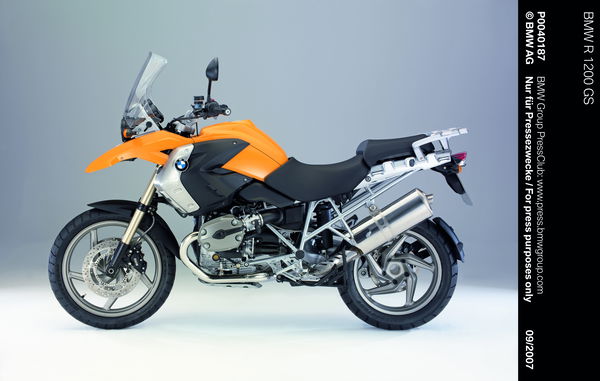
Engine mods boost power, improved ergonomics, revised side panels and instruments. Adventure version follows as before.
1170cc (101 x 73mm)
105bhp @ 7500rpm (85lb ft @ 5750rpm)
229kg wet
Price when new: N/A
Number built: N/A
2010-2012 R1200GS
New DOHC ‘Twin cam’ cylinder heads give mild performance boost and signified by new head covers. Adventure version follows as before.
1170cc (101 x 73mm)
110bhp @ 7750rpm (88lb ft @ 6000rpm)
229kg wet
Price when new: N/A
Number built: N/A
2013-2017 R1200GS
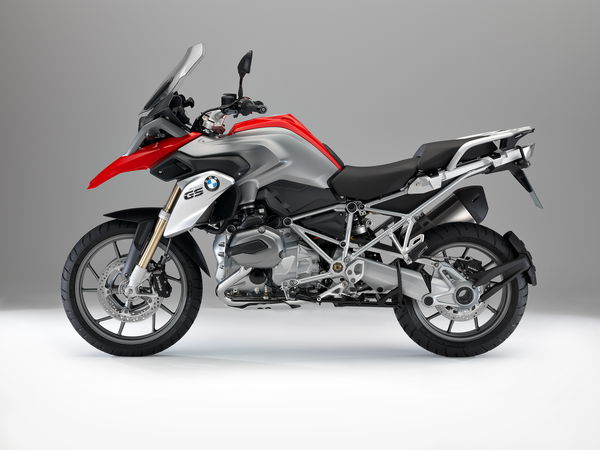
All-new l/c engine, Paralever swaps side, electronic riding modes, radial brakes, adjustable windscreen, new styling. Adventure version follows as before.
1170cc (101 x 73mm)
125bhp @ 7750rpm (92lb ft @ 6500rpm)
238kg wet
Price when new: £11,395
Number built: N/A
2017-2019 R1200GS

Uprated electronics, updated styling, uprated ESA option. Adventure version follows as before.
1170cc (101 x 73mm)
125bhp @ 7750rpm (92lb ft @ 6500rpm)
244kg wet
Price when new: £12,370
Number built: N/A
2020-2023 R1250GS

Enlarged ‘Shift Cam’ engine, TFT dash now standard, uprated electronics. Adventure version follows as before.
1254cc (102.5 x 76mm)
136bhp @ 7750rpm (105.4lb ft @ 6250rpm)
249kg wet
Price when new £13,415
Number built N/A
2024- R1300GS
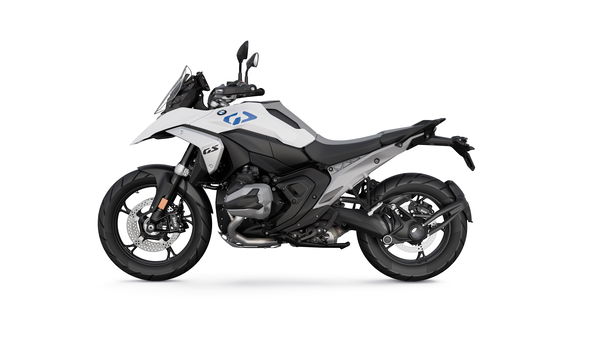
All new bike with enlarged yet more compact and lighter engine, more power and torque, lighter chassis, uprated electronics and new styling.
1300cc (106.5 x 73mm)
145bhp @ 7750rpm (110lb ft @ 6000rpm)
237kg wet
Price when new: £15,990
Number built: N/A
